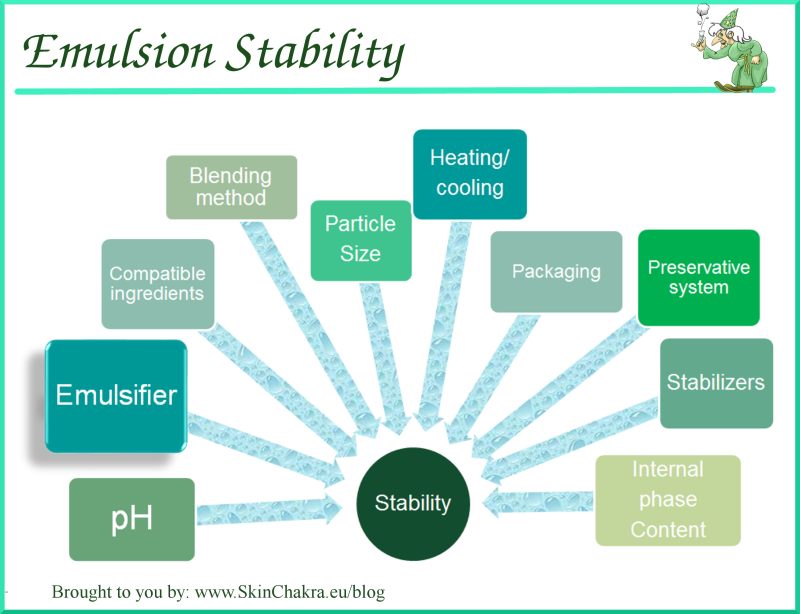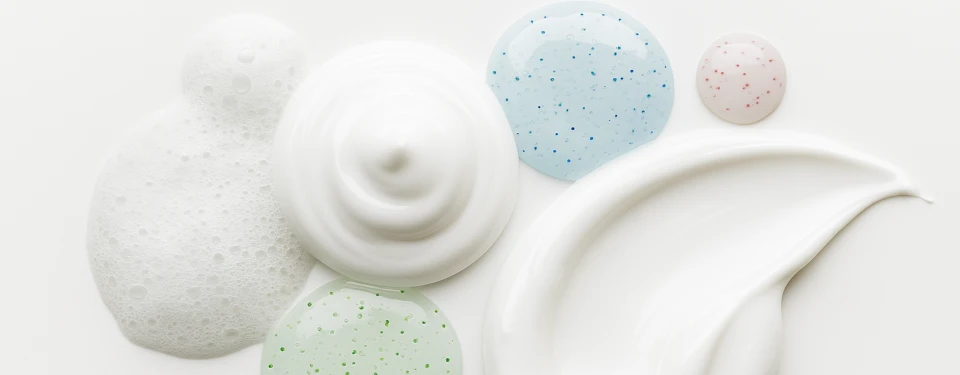Have you ever wondered why your favorite lotion stays smooth and fresh every time you use it? The secret lies in something called emulsifiers.
These tiny ingredients play a huge role in keeping your cosmetics stable, ensuring they don’t separate or lose their texture. Understanding how emulsifiers work can help you choose better products and get the most out of your skincare routine. Keep reading to discover how emulsifiers protect your cosmetics and why they matter for your beauty essentials.
Function Of Emulsifiers In Cosmetics
Emulsifiers play a key role in cosmetic products. They keep ingredients mixed and stable. Without emulsifiers, creams and lotions would separate.
These ingredients help blend oil and water parts. This mixing creates smooth and consistent textures. Emulsifiers also improve how cosmetics feel on the skin.
What Emulsifiers Do In Cosmetics
Emulsifiers act as a bridge between oil and water. They stop these parts from separating. This keeps the product stable and safe to use.
How Emulsifiers Create Texture
They help make creams soft and smooth. This makes applying cosmetics easier. A good texture feels nice and spreads well.
Protecting Cosmetic Ingredients
Emulsifiers help protect active ingredients. They keep these ingredients from breaking down. This helps the product stay effective longer.
Improving Product Shelf Life
With emulsifiers, products last longer on shelves. They prevent ingredients from separating or spoiling. This reduces waste and keeps products fresh.

Credit: www.cinz.nz
Types Of Emulsifiers Used
Emulsifiers play a key role in making cosmetics smooth and stable. They help mix oil and water parts that usually do not combine well. Different types of emulsifiers suit different products. Knowing these types helps create better cosmetics.
Each emulsifier type has unique features. These affect texture, shelf life, and how the product feels on skin. Below are common types used in cosmetics.
Nonionic Emulsifiers
Nonionic emulsifiers do not carry an electric charge. They work well with sensitive skin. These emulsifiers create stable creams and lotions. Examples include polysorbates and sorbitan esters.
Anionic Emulsifiers
Anionic emulsifiers have a negative charge. They are good at cleaning and foaming. These emulsifiers often appear in shampoos and facial cleansers. Sodium lauryl sulfate is a well-known type.
Cationic Emulsifiers
Cationic emulsifiers carry a positive charge. They help condition hair and skin. Found in conditioners and creams, they improve softness. Quaternary ammonium compounds are common cationic emulsifiers.
Amphoteric Emulsifiers
Amphoteric emulsifiers can carry both charges. They adjust to the product’s pH. These emulsifiers work gently and are less irritating. Cocamidopropyl betaine is a popular example.
Natural Emulsifiers
Natural emulsifiers come from plants or animals. They attract users who prefer organic cosmetics. Examples include lecithin and beeswax. These emulsifiers often add nourishing benefits.
Impact On Product Texture And Feel
Emulsifiers play a key role in shaping the texture and feel of cosmetic products. They help mix oil and water parts, making the product smooth and easy to spread. The right texture can make a product feel pleasant on the skin and encourage regular use.
The feel of a cosmetic product depends on how well the emulsifier works. It controls thickness, creaminess, and how quickly the product absorbs. A good emulsifier creates a balance that customers enjoy.
Creating Smooth And Creamy Textures
Emulsifiers blend oil and water to form a uniform texture. This makes creams and lotions soft and smooth. Without emulsifiers, products can separate and feel grainy or oily.
The smooth texture improves user comfort. It feels gentle and light on the skin. This helps the product spread evenly and absorb better.
Controlling Thickness And Viscosity
Emulsifiers help adjust how thick or runny a product is. Some products need to be thick to stay on the skin longer. Others work best if they are light and easy to apply.
By choosing the right emulsifier, manufacturers control the product’s flow. This control affects how the product feels during use and how it performs.
Enhancing Absorption And Skin Feel
The skin’s feel after using a product matters. Emulsifiers can make a product absorb quickly or leave a protective layer. This affects whether the skin feels greasy or fresh.
Good emulsifiers create a natural, comfortable feel. They help the skin stay hydrated without clogging pores or feeling sticky.

Credit: skinchakra.eu
Enhancing Shelf Life With Emulsifiers
Emulsifiers play a key role in extending the shelf life of cosmetic products. They help keep the mixture stable, stopping ingredients from separating over time. This stability means the product stays effective and safe to use longer.
By blending oil and water, emulsifiers create a smooth texture. This prevents changes that can cause spoilage or loss of quality. Without emulsifiers, cosmetics would break down quickly and become unusable.
Preventing Ingredient Separation
Cosmetics often contain both oil and water-based ingredients. These tend to separate naturally, which can spoil the product. Emulsifiers bind these ingredients together, maintaining a uniform mix. This prevents the product from losing its consistency and effectiveness.
Protecting Against Microbial Growth
Emulsifiers help create a stable environment that can slow microbial growth. When ingredients stay well mixed, harmful bacteria find it harder to grow. This adds an extra layer of safety and helps products last longer on shelves.
Maintaining Texture And Appearance
The look and feel of cosmetics matter a lot to users. Emulsifiers keep creams and lotions smooth and creamy. They stop changes like clumping or oiliness, which can turn customers away. A stable texture means a better user experience over time.
Common Challenges In Emulsion Stability
Emulsions are mixtures of oil and water phases. They need emulsifiers to stay stable and not separate. Stability issues can cause products to lose texture, color, and effectiveness. Understanding common challenges helps improve cosmetic formulations and product quality.
Phase Separation
Phase separation happens when oil and water layers split. This causes the product to look uneven and lose its smooth feel. It reduces shelf life and customer trust in the product.
Coalescence
Coalescence occurs when small droplets merge into larger ones. It weakens the emulsion and speeds up separation. This makes the product less effective and less appealing.
Ostwald Ripening
Ostwald ripening is the growth of larger droplets at the expense of smaller ones. It changes the droplet size distribution over time. This leads to texture changes and product instability.
Viscosity Changes
Viscosity affects the thickness and flow of emulsions. Changes can cause the product to become too thick or too runny. This affects how the product feels and spreads on the skin.
Microbial Contamination
Microbes can grow in emulsions if preservatives fail. This can spoil the product and cause skin irritation. Proper emulsifier choice helps maintain microbial safety.
Innovations In Emulsifier Technology
Innovations in emulsifier technology drive the cosmetic industry’s progress. These advances improve product stability and texture. They also enhance the skin feel and shelf life of cosmetics. New emulsifiers respond better to different ingredients and conditions. They help create smoother, more consistent products that customers trust.
Emulsifiers today are designed to work with natural and synthetic ingredients. Scientists focus on making them safer and more eco-friendly. This shift meets consumer demand for cleaner, greener cosmetics. Innovation also means emulsifiers can handle complex formulas with ease.
Bio-Based EmulsifiersBio-based emulsifiers come from plants and renewable sources. They replace traditional synthetic emulsifiers. These are gentle on the skin and break down faster in the environment. Bio-based options suit natural and organic cosmetic lines. They maintain product stability without harsh chemicals.
Smart EmulsifiersSmart emulsifiers adapt to temperature and pH changes. They keep products stable under various conditions. These emulsifiers improve the performance of creams and lotions. They prevent separation and extend shelf life. Smart emulsifiers support innovative cosmetic formulas.
Multi-Functional EmulsifiersMulti-functional emulsifiers perform more than one role. They act as stabilizers, thickeners, and moisturizers. This reduces the need for extra ingredients. Products become simpler but still effective. Multi-functional emulsifiers save cost and improve texture.

Credit: lemmel.net
Frequently Asked Questions
What Are Emulsifiers In Cosmetics?
Emulsifiers are ingredients that help blend oil and water in cosmetics. They create stable mixtures, preventing separation and improving texture and consistency.
How Do Emulsifiers Improve Cosmetic Stability?
Emulsifiers stabilize cosmetic formulas by forming a protective barrier around droplets. This stops ingredients from separating, ensuring long-lasting, uniform products.
Which Emulsifiers Are Best For Skin-friendly Cosmetics?
Natural emulsifiers like lecithin and beeswax are gentle and effective. They maintain product stability without irritating sensitive skin.
Can Emulsifiers Affect Cosmetic Shelf Life?
Yes, emulsifiers enhance shelf life by preventing ingredient separation and degradation. Stable products resist microbial growth and maintain performance longer.
Conclusion
Emulsifiers keep cosmetics smooth and mixed well. They stop oils and water from separating. This helps products last longer and feel better on skin. Without emulsifiers, creams and lotions would break apart quickly. Choosing the right emulsifier makes a big difference.
It supports product quality and user experience. Understanding their role helps us appreciate cosmetic science more. Emulsifiers truly are key to stable, effective beauty products.
 Skip to content
Skip to content 